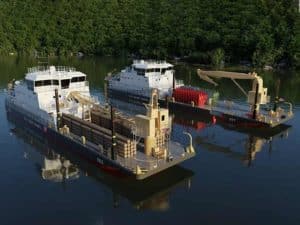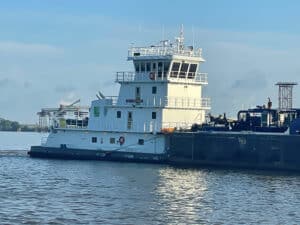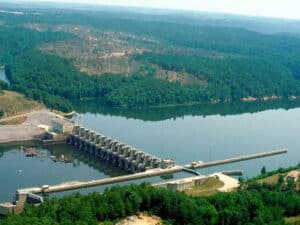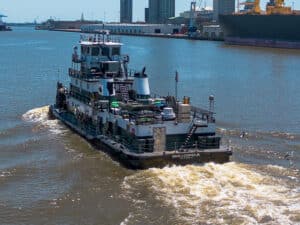
USACE and Arkansas in cost share agreement on Murray Lock and Dam upgrade
Written by Marine Log Staff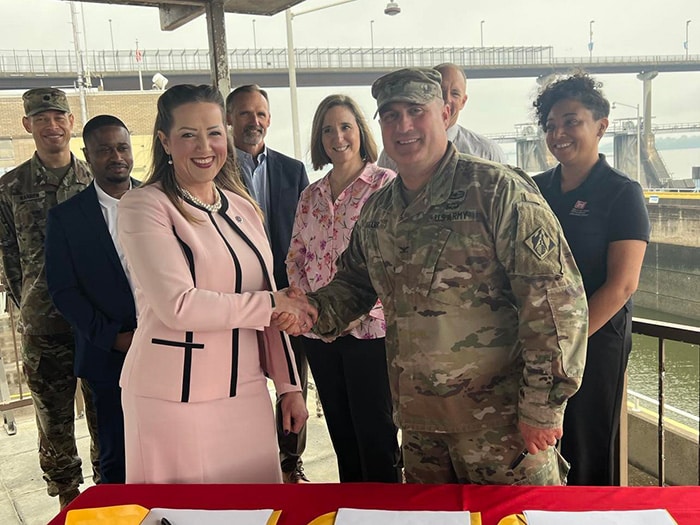
The cost share agreement was signed June 9, by Arkansas Waterways Commission Director Cassandra Caldwell and USACE Little Rock District Commander Col. Damon Knarr at Murray Lock & Dam 7. [USACE photograph]
The Little Rock Engineer District has entered into a cost-share Memorandum of Agreement with the Arkansas Waterways Commission to update tow haulage equipment at Murray Lock and Dam on June 9 in Little Rock, Arkansas.
The Arkansas Waterways Commission is the sole state agency responsible for developing, promoting and protecting waterborne transportation in Arkansas. The Commission also promotes economic development for ports on the five commercially navigable rivers of the state: The Arkansas, Mississippi, Ouachita, Red, and White Rivers.
The cost share agreement was signed June 9, by Arkansas Waterways Commission Director Cassandra Caldwell and USACE Little Rock District Commander Col. Damon Knarr at Murray Lock & Dam 7.
The agreement will allow much needed upgrades to be made, increasing productivity and functionality for stakeholders along the McClellan-Kerr Arkansas River Navigation System MKARNS. Once complete, the goal is to standardize tow haulage at all locks and dams along the MKARNS.
Roughly $5 billion of goods are moved on the MKARNS annually and other upgrades for the waterway are in the works.
The Little Rock and Tulsa Engineer Districts have been seeking public input for a draft Supplemental Environmental Assessment on the MKARNS 12-foot Channel Deepening Project. That project will increase the navigation channel to a minimum navigable depth of 12-feet throughout the MKARNS. Deepening the channel will allow the existing inland commercial fleet to sail at deeper drafts that are consistent with those on the Lower Mississippi River. This will allow the commercial fleet to load more cargo onto barges which will lower transportation costs, benefiting producers and consumers throughout the region and nationally.
The project will require placing rock structures to scour the channel, dredging the channel and utilizing in-water and upland dredge disposal sites throughout the project area. Additionally, some lock modifications will be needed to accommodate the increase in vessel size that the deepened channel would allow.

